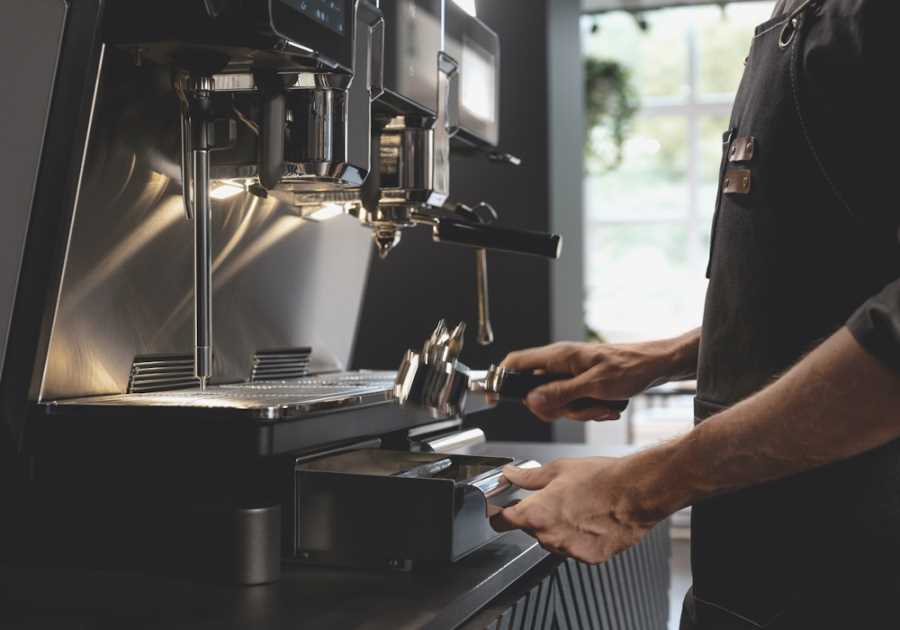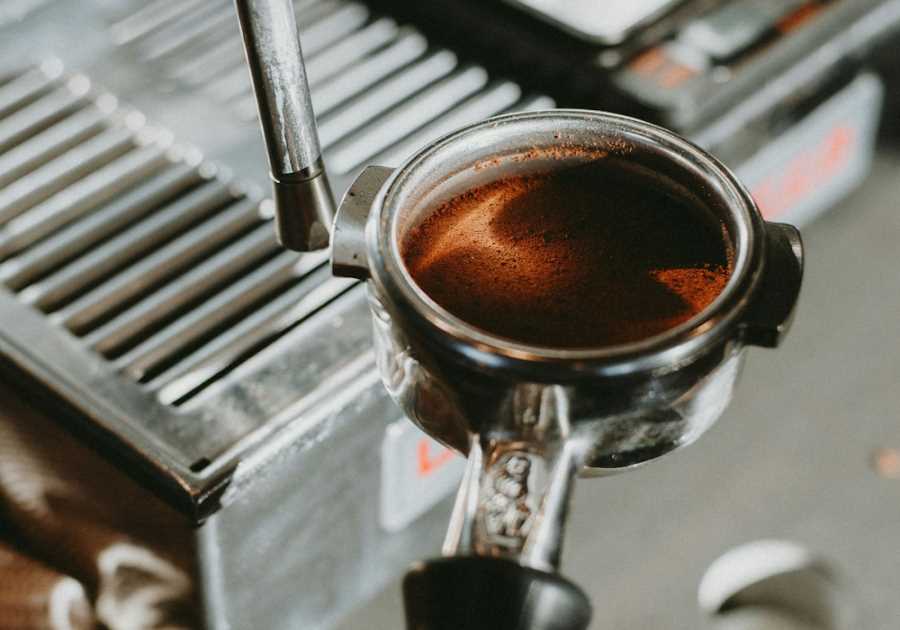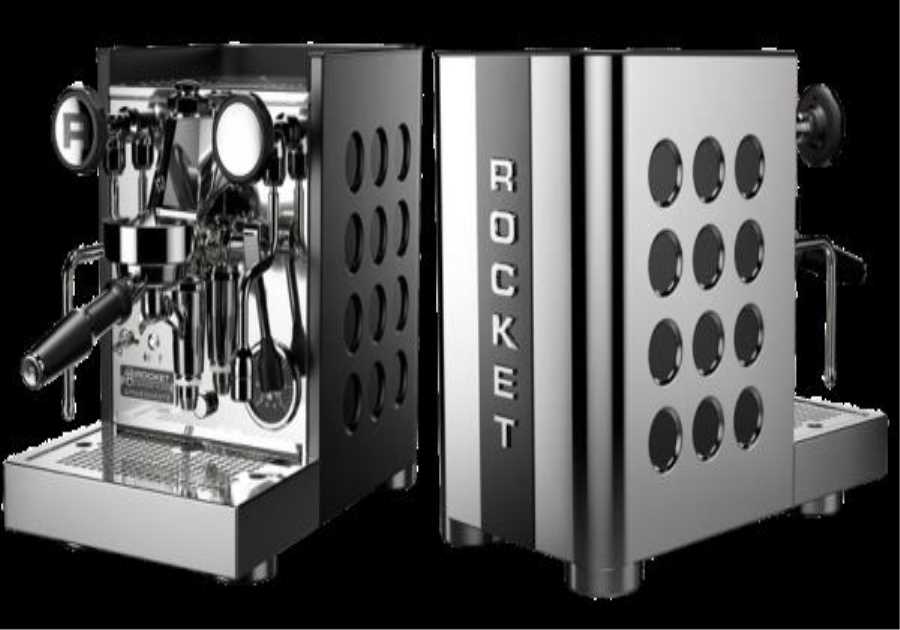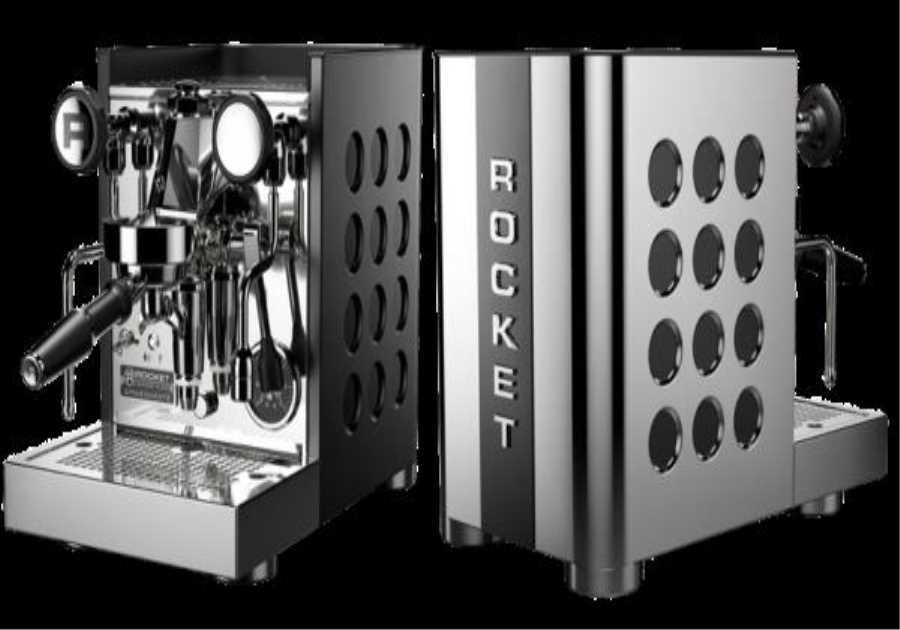When you picture a shot of espresso, a thick layer of golden brown crema is sure to come to mind. Ever since Italy introduced espresso to the world, crema has been an iconic and inextricable part of the beverage.
Moreover, crema acts as a canvas – allowing baristas and coffee enthusiasts to pour intricate and detailed latte art. And with the visual appeal of beverages being just as important as taste and texture, more and more customers expect crisp and high-contrast latte art designs. With no crema, this simply wouldn’t be possible.
But as specialty coffee has favoured lighter roast profiles in recent years, it’s not uncommon to see less crema on top of your espresso. So this begs the question: is crema always necessary to make great espresso?
To understand more about the science behind crema and how it impacts the espresso experience, I spoke to Samo Smrke, Head of Coffee Transformation at the Coffee Excellence Center, Stefanos Domatiotis, founder of Create Coffee Roasters, and Melind John, Managing Director at Josuma Coffee Company.
You may also like our beginner’s guide to tasting espresso.
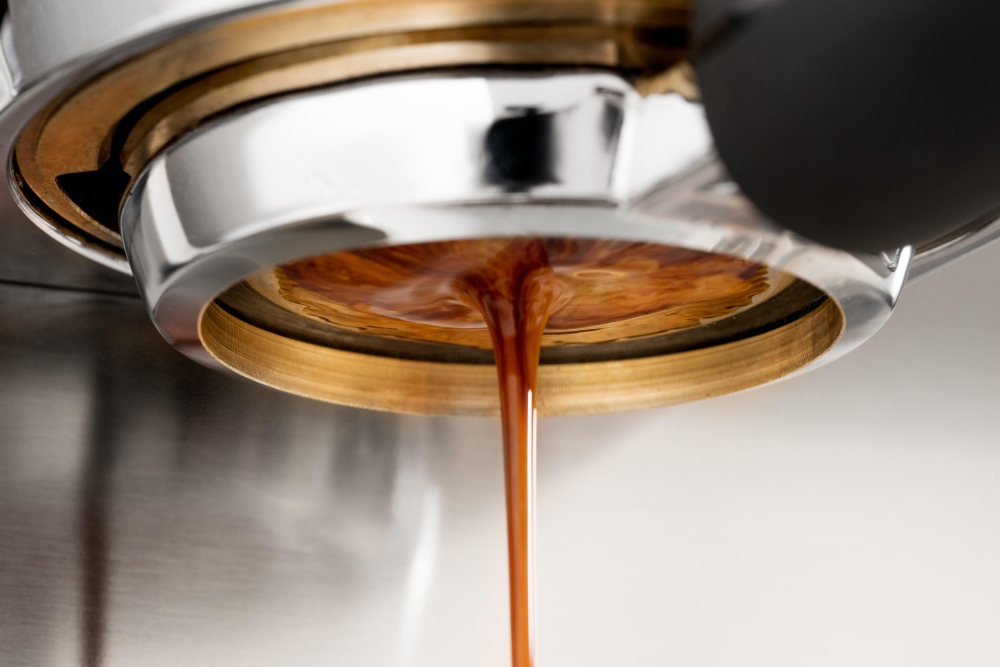
What actually is crema?
It’s believed the term “crema” was first used around 1938, when legendary Milanese coffee bar owner Achille Gaggia filed a patent for his Sistema Lampo espresso machine prototype. He debuted his machine at the 1939 Trade Fair in Milan – and attendees were impressed by the “crema caffe naturale” that sat on top of the espresso.
In his book Espresso: Ultimate Coffee, author Kenneth Davids explains that Gaggia claimed his machine: “produced coffee that was so rich that, in effect, the coffee produced its very own cream”.
Crema, however, is something entirely different.
According to The World Atlas of Coffee by James Hoffman, crema forms in a unique way:
“When water is under pressure, it dissolves more carbon dioxide (CO2), a gas in the coffee beans that is created during roasting,” James writes. “When the brewed liquid gets back to normal atmospheric pressure on its way to the cup, the liquid can no longer hold on to all the gas so it comes out of solution as innumerable tiny bubbles. These bubbles become trapped in the coffee liquid and appear as a stable foam – the crema.”
Stefanos Domatiotis is a World Brewers Cup Champion and a World Barista Championship finalist. He’s also the founder of Create – a coffee education and experience centre in Athens, Greece.
“Traditionally, ‘good’ crema is velvety-thick,” he says. “It reminds me of tiger fur or caramelised sugar,” he says. “A barista can also judge many different things from an espresso’s crema, including how fresh the coffee is and the quality of extraction.”
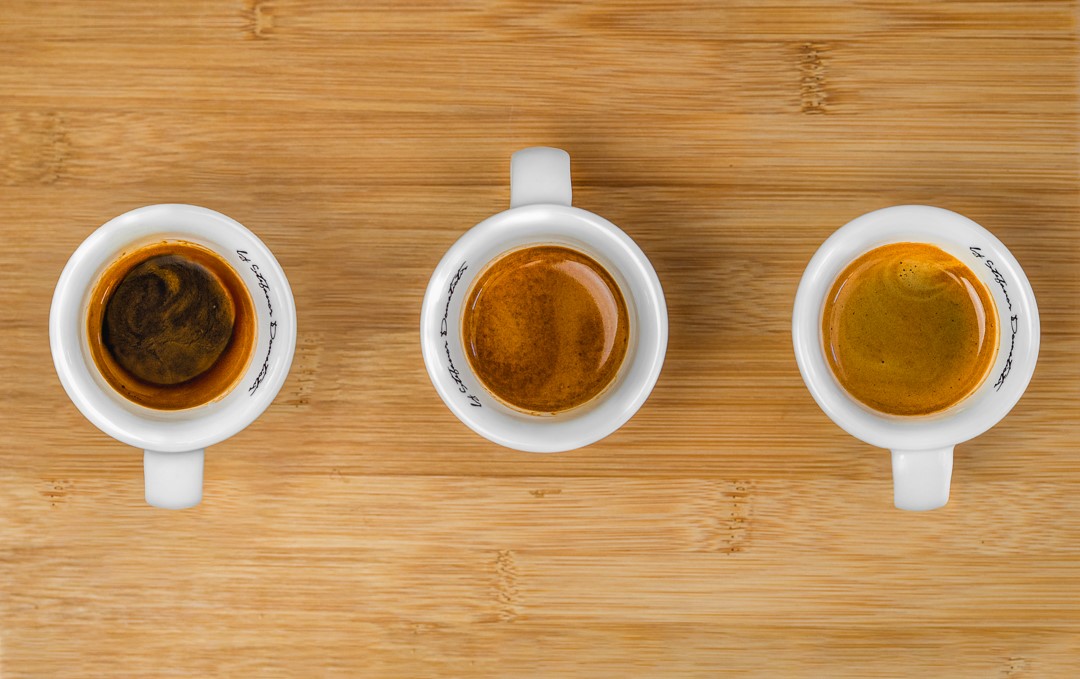
Understanding the science behind crema
Before we unpack how the extraction process results in a thick layer of crema on top of espresso, we should understand more about what makes “good” crema.
Melind John is the Managing Director at Josuma Coffee Company – a green coffee importer and roaster in San Francisco, US which focuses heavily on sourcing coffee from India.
“Ideally, crema should be reddish-brown and it should coat the tongue, adding to the mouthfeel of an espresso,” he explains. “As the bubbles trapped in the crema burst, they release aromas in the mouth, which go up to the back of the nose and amplify the flavours in the espresso.”
He adds that it should also have a uniform structure and an even distribution of small-sized bubbles – the smaller, the better. This makes the crema more stable, and enhances its visual appeal and thick mouthfeel.
So what exactly happens when crema forms?
Samo Smrke is the Head of Coffee Transformation at the Coffee Excellence Center at the Zurich University of Applied Sciences. He explains that two important factors are at play during the process.
“First is the amount of carbon dioxide trapped in coffee particles,” he tells me. “When coffee is fresh, CO2 is trapped under some pressure. When it’s pushed out by water, the gas is still compressed because of the higher pressure. But at the bottom of the puck, the pressure becomes ambient.”
This, he says, causes the small compressed bubbles to grow in size – and form the characteristic reddish-brown foam.
“The second factor is that the chemical compounds in coffee help to stabilise foam structure,” he continues. “This is due to the presence of large molecules, such as carbohydrates and melanoidins, combined with coffee oil, which creates a relatively stable foam.”
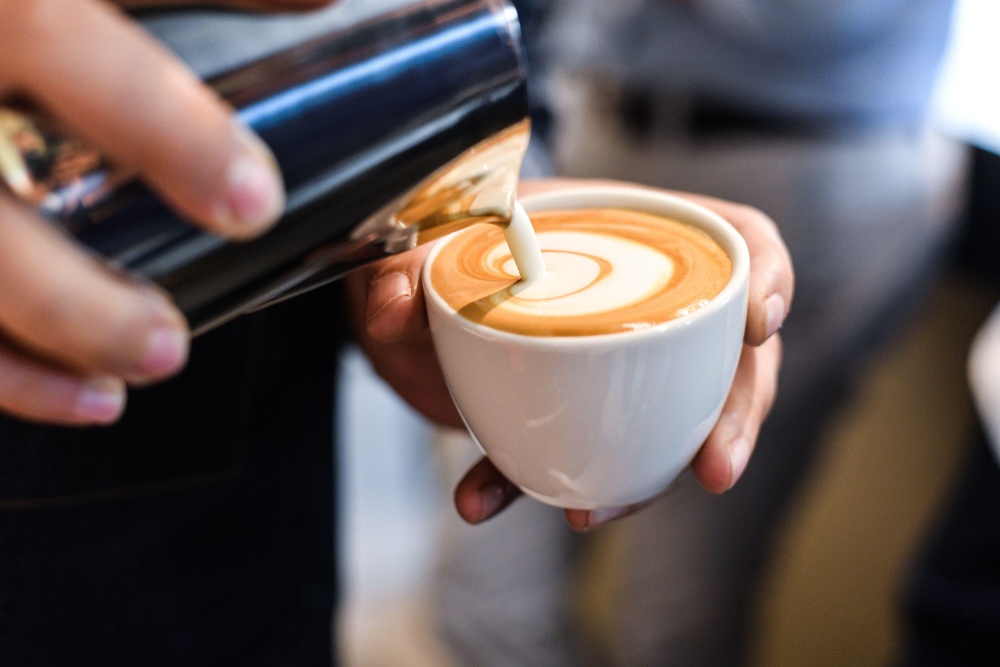
Why is it necessary?
First and foremost, crema plays an integral role in the overall espresso experience.
“The oily exterior of crema adds to the body and mouthfeel of espresso, and thereby enhances its tactile element,” Melind says. “Additionally, the trapped aromas in the crema can amplify sweetness.”
According to Samo, research also suggests that crema can slow down the release of aromatic compounds in the espresso.
“It mainly acts as a protective layer to retain volatile aroma compounds,” he explains. “However, it can also speed up the release of certain compounds that more readily dissolve in oil and water.”
And when it comes to milk-based beverages, having a good layer of crema on top of your espresso is essential. Not only does crema help to incorporate espresso with milk, but it also serves as a canvas to pour high-contrast and well defined latte art with more ease.
Generally speaking, baristas will gently swirl the espresso to create an even layer of crema before pouring a small amount of milk to “stain” the coffee. Some baristas will then gently swirl again to fully incorporate the espresso and milk, and then proceed to pour their chosen latte art design.
The stark contrast between the white colour of milk and the reddish-brown crema helps to make latte art look more sharp and defined – with the design spread evenly and symmetrically across the surface of the drink.

So is crema a true measure of espresso quality?
Stefanos says from a customer’s perspective, crema is usually an indication of quality espresso – but emphasises that this isn’t always the case.
“I would say don’t judge a coffee by its crema,” he admits. “You can have a shot of espresso that has a beautiful, thick, dense crema – but it can taste awful.
“My mornings usually start with an americano – great espresso with hot water between 94ºC and 95ºC – with no crema at all,” he adds. “But the coffee is still delicious.”
Traditionally speaking, a thick layer of crema was an absolute must for espresso. However, with an increasingly diverse range of processing methods and roast profiles in specialty coffee, it’s now the responsibility of roasters and baristas to understand how much crema there “should” be for each particular espresso.
“If you want your espresso to have sweetness and a creamier mouthfeel, then crema is often a good indicator that the espresso will hit the mark,” Melind says. “But if you prefer a different style of espresso, then it might be better to have less or no crema at all.”
Knowing how to interpret crema
Whether you believe it’s necessary to make great espresso or not, there are many things we can learn about coffee from how crema is formed.
“Fresher coffee produces more crema, so too much of it will indicate that the beans were too fresh, which usually results in a harsh taste,” Samo explains. “Meanwhile, if channelling occurs during extraction, less crema will form on top of the espresso.
“Based on the appearance of the crema – especially with darker-roasted coffee – you can also see whether the coffee was over or under-extracted,” he adds.
Ultimately, Samo asserts that crema is an indicator of what happens during extraction, but it’s not essential for excellent espresso.
“It’s not always the case that any specific appearance of crema will indicate a better or worse coffee,” he says – adding that factors like roast profile, variety, and even the serving vessel itself will impact the formation of crema.

As espresso evolves – particularly in specialty coffee – the industry’s opinion about crema and how important it is has also shifted.
Overall, although it plays an integral role in pouring impressive latte art, you shouldn’t judge espresso by its crema alone. Instead, first and foremost, espresso quality should be determined by taste and texture – with personal preferences also accounted for.
Enjoyed this? Then read our article on pulling perfect shots with manual espresso machines.
Perfect Daily Grind
Want to read more articles like this? Sign up for our newsletter!
The post Is crema always necessary for excellent espresso? appeared first on Perfect Daily Grind.
By: Bhavi PatelTitle: Is crema always necessary for excellent espresso?
Sourced From: perfectdailygrind.com/2024/04/is-crema-always-necessary-for-excellent-espresso/
Published Date: Wed, 24 Apr 2024 05:44:00 +0000
Always check our latest articles at...
https://coffeecutie.com/espresso-brewing

